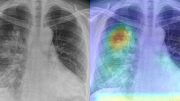The past few months have seen the most significant transformation in service delivery in both GP surgeries and pharmacies since the inception of the NHS. The new care service delivery model, has affected everyone, from patients to practitioners, administrative staff to suppliers. From telephone triage and video consultations to digital solutions and data sharing, collaboration barriers that have been in place for years have been removed, as a result of COVID-19.
What happens now, however, is the big question. While there is clearly a need to pause and to assess, it is not time to stop – or to slide back to the inefficiencies of the past. We have an extraordinary opportunity to build on the frenetic – and to be honest overdue – changes that have been achieved and to build a primary care model that truly reflects both patient needs and our ability to deliver.
Steve Bradley, Group Managing Director, Cegedim UK, explores the ways in which digital solutions have supported health care providers (HCPs) and patients during Covid-19, and argues why they should remain a mainstay of healthcare provision in the future.
Extraordinary Achievements
Digital transformation has been on the agenda for primary care services for decades. Electronic repeat (eRepeat) prescriptions, for example, which enable a GP to provide 12 months’ prescription authorisation, radically cutting surgery workload, have been available for ten years but adopted by just over 10% of practices. Telephone triage had been deployed in a handful of practices before Covid-19; but in the past few months has become the default approach for all.
The Covid-19 outbreak has clearly accelerated digital health channels. While fewer than 1% of appointments were done via video last year, and 80% in person, according to the Royal College of GPs, BBC analysis reveals GPs have seen just seven in every 100 patients face-to-face because of the coronavirus outbreak. Furthermore, a huge number of patients have embraced self-service by signing up for Online Patient Services. For GPs, the shift in patient expectation has been transformative, with reports of doctors managing 70 patients in one morning and needing to see just 14 face to face. Using telephone triage, instant chat and video calls, GPs can not only console the worried well and direct patients to nurses for blood tests, but also check a child’s rash or assess an individual’s mental health from their demeanour.
The result is not only a more efficient process; it opens the door to a health service that is able to truly prioritise the ill – those who require not only a face to face appointment but more time than the standard five, seven or ten minute appointments. This is one of the most fundamental changes in primary care delivery that we can take forward from the extraordinary achievements of the past few months. Our health requirements are not the same; clinicians both need and want to be able to safely decide to spend more time with some patients and less with others.
Digital First not Digital Only
While digital technologies have been fundamental to sustaining health care provision during the Covid-19 outbreak, it is, of course, essential to remember that a significant minority do not have online access. Many of those will be most at risk and vulnerable. It is very likely that those individuals on the shielded list will be confined at home for some time to come. How, therefore, will heath care services be reconfigured to work effectively within the Covid-19 enforced limitations while still supporting those with long term conditions?
While patient expectations have shifted during the crisis, it is also clear that many patients have avoided interaction with both primary and secondary care – to the potential detriment of their health. The future management and support of those with long term conditions will require more data and better collaboration – for example apps and digital channels for those patients able to self-care, and the use of database triggers to identify those at most risk to support priority intervention by clinicians.
Resources are without any doubt going to remain stretched over the coming months and there are many, many gaps in service delivery that will need to be addressed. From vaccinations and cervical smears, to a concerning drop in anti-depressant prescriptions, indeed a notable reduction in both new and switch prescriptions, GP practices will have to take some tough decisions regarding prioritising care and services. Using intelligent triggers to enable GPs to target the right people with the right services will be invaluable; but it will also be important to further explore the collaboration that has been vital over the past few months. While Covid-19 hot or red zones may not be required long term, there is an opportunity to explore how practices can work together, and employ digital solutions, to better manage demands.
Business and Technology Transformation
There is a need, therefore, to consider both the business model and the underpinning technology infrastructure. Some of the amazing achievements of the past few months have been enabled by rapidly deploying excellent technology – such as providing pharmacies with one click access to the Summary Care Record and Real Time Exemption Checking (RTEC), as well as national data sharing through GP Connect to provide a free flow of patient information where it was required. These were fantastic examples of the way multiple bodies worked together incredibly quickly, breaking down bureaucracy and overcoming technical barriers to deliver a solution.
Other aspects of care provision have been somewhat more ‘make do and mend’ – such as video consultations via personal mobile phones because GP practices use desktop computers which do not include a camera. Inter-practice communication has also been difficult due to telephone systems that are simply not configurable to support remote working. Looking ahead, all staff need systems that provide both effective communication and excellent, secure data sharing to enable them to work as a team – both within and outside the practice.
The ability to work from home has also become a key topic for many during the past few months and providing clinicians with the option to achieve a better work-life balance could also encourage people back into the NHS. But to achieve this will require that we avoid reintroducing bureaucracy and the historical constraints that have delayed digital innovation and build on the collaboration that has delivered so much so quickly.
Conclusion
The past few months have been extraordinary on many levels. The technology has not been perfect; there have been challenges; but the shift in patient expectation, clinical collaboration and working practices can provide the foundation for a primary care service that supports the needs of both patients and HCPs. With good infrastructure and a goal to embed the positive developments of the past few months – such as data sharing and cross practice collaboration – we have the chance to drive faster and further improvements in healthcare services for the future.





